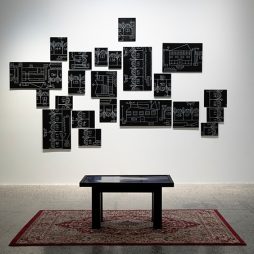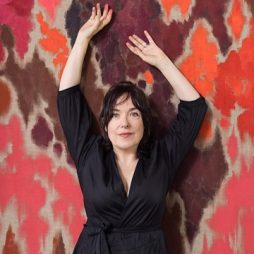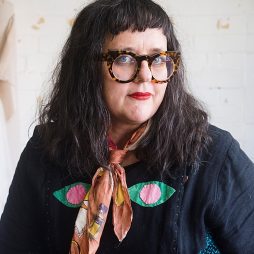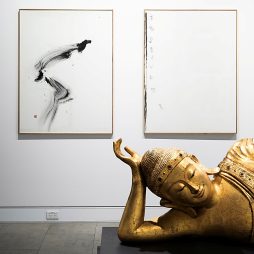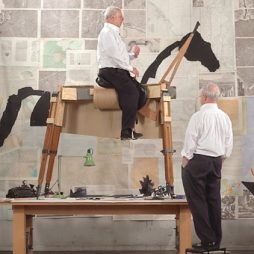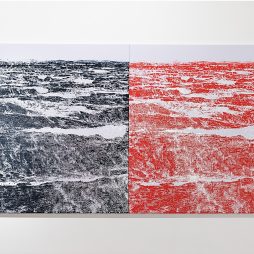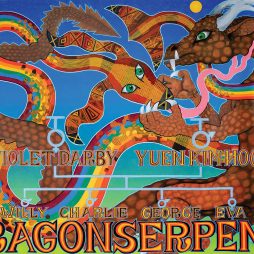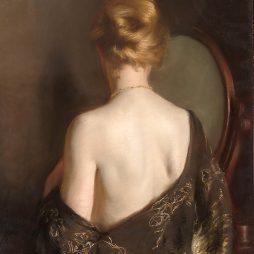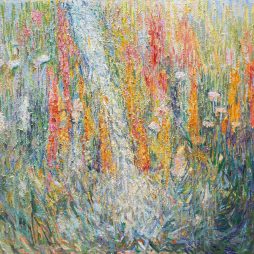TRIBUTE: Heroically Beautiful, Bruce Goold (1948-2025)
I met Bruce when I was twenty-one and creating my puppet theatre at the Yellow House in Potts Point, Sydney. Bruce told me if I wanted to be an artist I needed to be a showman and promptly took over my styling giving me a black and green satin coat with beautifully embroidered dragons. I drove a St George Cab to get the money to fund my art. Once, when giving Bruce Goold a lift, he told me his road map to life was Joris-Karl Huysmans’s 1884 novel, Against Nature, where an aesthetic, dandy creates an alternative world of art to escape the ugliness and conformity he despised. Bruce’s description was so real it was like he was telling it from his own memories. Then he said, “That is what the Yellow House has to be, people will walk off the street into what Martin [Sharp] calls the street of dreams.”
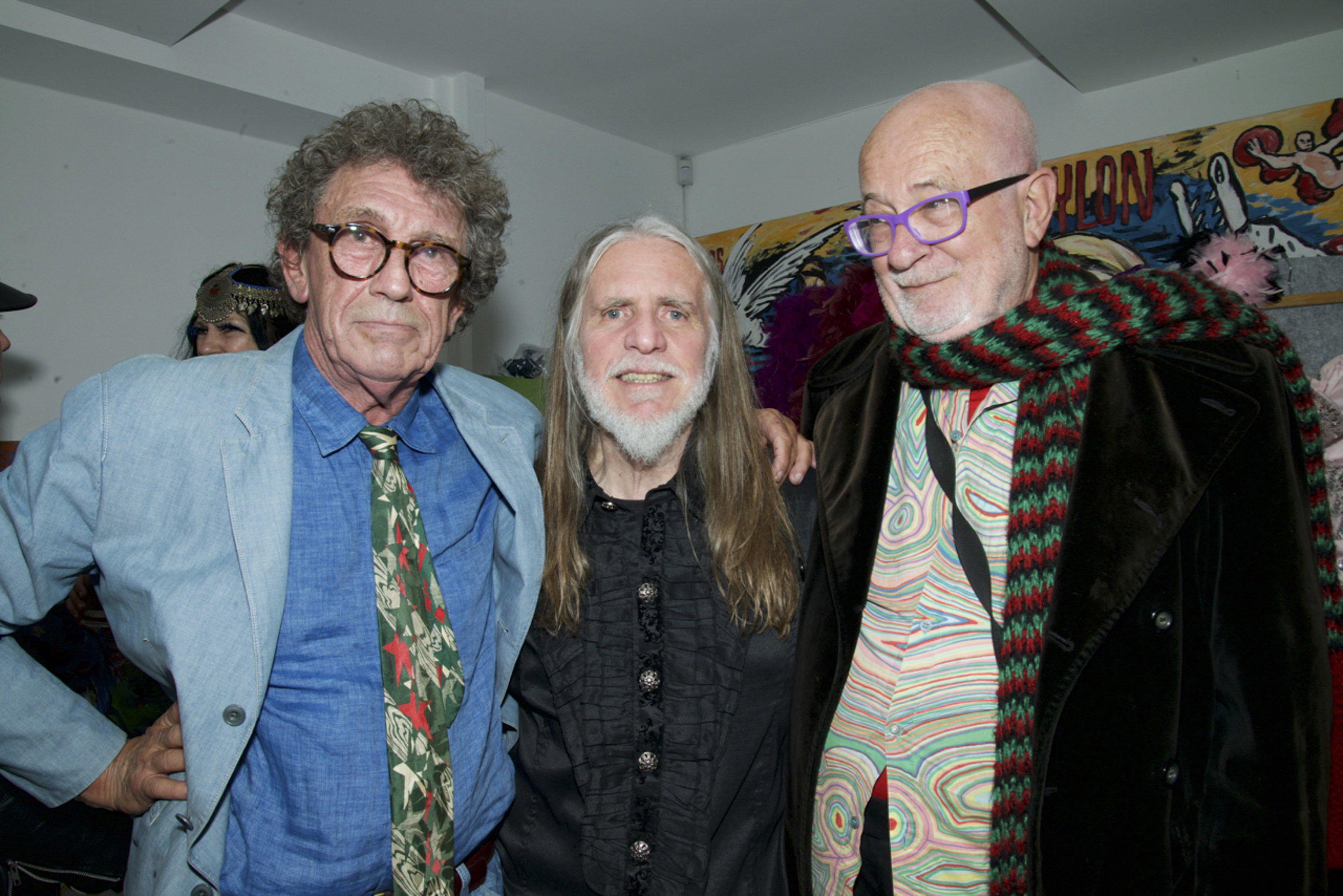
For a short time in the early seventies, boring old Sydney Town had a place to go that fitted Bruce’s vision.
After living and successfully exhibiting in London and Dublin, Bruce moved to Palm Beach in 1990 with his wife Kate and young daughter Nancy. Nancy describes him as being like a lyrebird, “Dad was the creative director of his own life, ensuring everything around him looked like the most stylish movie we all want to see. He did it all: interiors, costumes, catering, props, music. All to curate the environment that he wanted to inhabit. In all honesty, his whole life was a work of art—the art of living. Mother Katie was Bruce’s great champion. Without her he would have been lost. She really held us all together, fiercely championed Bruce’s work and kept him going.”
Bruce became famous when he was commissioned in 1986 to regularly create full page illustrations for Good Weekend magazine to accompany articles by the naturalist Nick Dyson. I felt proud every time I bought the Saturday Sydney Morning Herald and there was Bruce. This was followed by Mambo. I could wear his loud shirts to the beach and brag to my surfing mates that a friend had designed them.
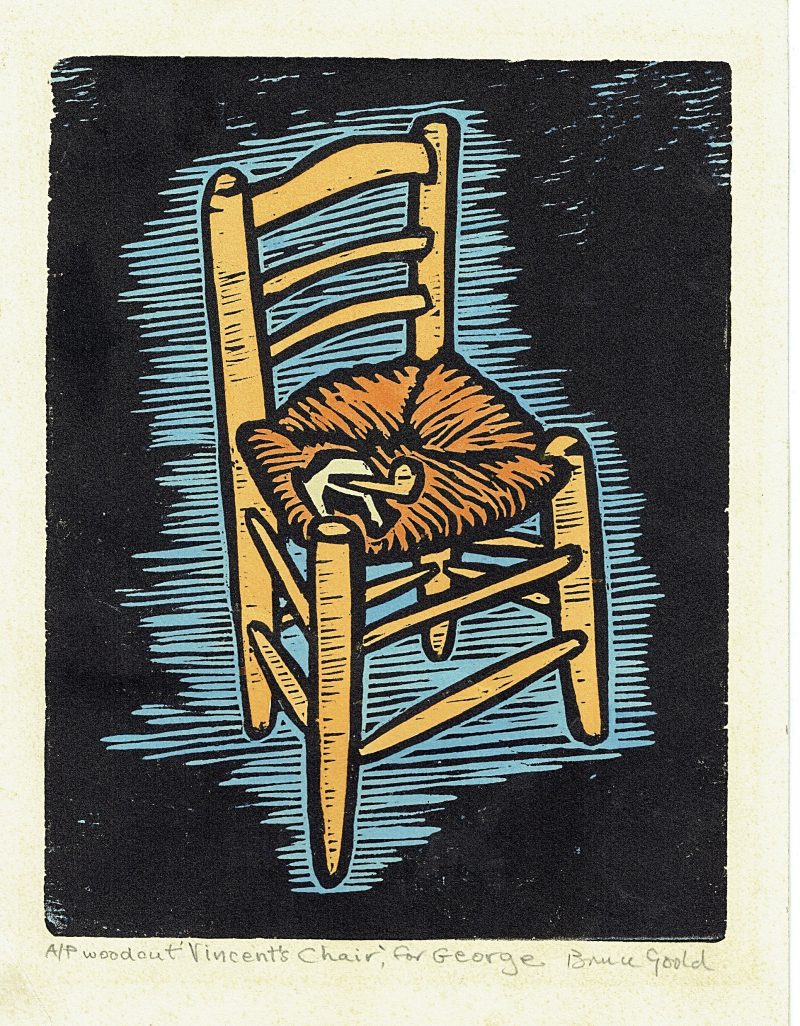
Bruce Goold, Van Gogh Chair, 2011, linocut, 20 x 50 cm
Wayne Golding from Mambo had studied Bruce’s printmaking at art school and was stunned and honoured when Bruce stepped into their offices, “I was at art school in the early eighties and majored in printmaking and when it came to printmaking in Australia, Bruce was God or at least, a god. Bruce lifted the portfolio he had brought with him, laid it on Dare’s [Jennings] desk and pulled out, carefully, artwork contained therein. He said he’d be happy to leave a couple of pieces with us, and we could decide whether they were a fit for our program. Here was one of Australia’s best, and probably most important printmakers, flipping through a collection of some of the most incredibly beautiful, hand-coloured linocuts that I’d ever seen out of a frame, and offering them to us if we were interested. I was wondering if that was a challenge. And of course we were . . . interested.”
Bruce designed a corner in the Magritte rooms of the Yellow House even more surreal than the master’s paintings. A white polar bear fur was thrown over an antique chaise lounge. One afternoon I was stunned to see Stuart Purves, who we were in awe of and considered to be Australian gallery royalty, reclining on the lounge, entranced by one of Bruce’s eloquent stories. Stuart lovingly remembers when Bruce installed his art in Australian Galleries, “His exhibitions were great events and drew crowds of admirers. Bruce was an artist to the core. He was a great contributor to the wellbeing of this nation’s culture. To visit Bruce’s studio at Palm Beach was to experience cultural chaos—beautiful tools of the trade of a printmaker all at hand, objects and specimens collected over decades and an air of things that mattered, resulting in a significant body of printmaking, painting, collage, assemblages, and textile design, all taking us to a place we hadn’t been before.”
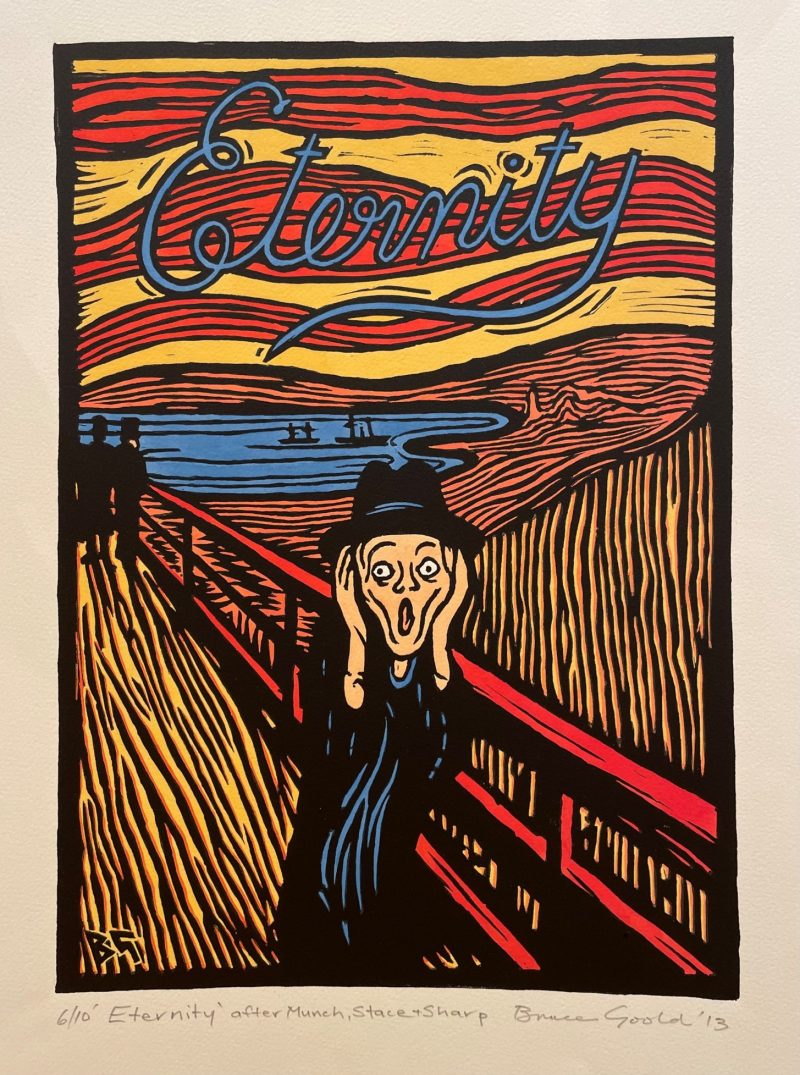
Bruce Goold, Eternity after Munch, Stace + Sharp, 2013, linocut, edition 10, 41.5 x 29.5 cm
Distance kept Bruce and I apart, but we were brothers in spirit. He was at Palm Beach on Sydney’s Northern Beaches and I lived at Werri Beach on the New South Wales south coast. I was delighted when, in 2016, the acclaimed documentary maker Bill Leimbach rang to say he was bringing Bruce down to interview us together. Bruce spent hours going over every item in the house, running his long fingers over my collection of African sculptures and finding my mother’s ceramic Magritte sculpture of a pair of high heel women’s shoes where the black leather turns to flesh toes. He had found the perfect place for them at the Yellow House and now decided they would be better placed here, in my home, next to one of her owls.
I will always be grateful to Bill for bringing us back together on camera and recording Bruce’s life in art. Bill acknowledges “Living on the Northern Beaches, I saw so many different prints, pillows, lino cuts, invitation cards by Bruce Goold in homes, shops, book shops. When I asked if anyone had ever made a film on his life and work, I was surprised to find there was none. Bruce and I spent many months chasing his old haunts. At Lord Howe Island he is regarded somewhat like the Gauguin of that island. But if there ever was a Palm Beach artist it would be Bruce Goold.” In 2017, Under the Lino: The life and art of Bruce Goold was launched by Bill’s company Lucky Country Productions.
Greg Weight was the Yellow House photographer and has become one of Australia’s greats in photography. He took a masterful photo of Bruce and Bliss draped on the stairs. Greg remembers taking that photograph, “Bruce was an extraordinarily good-looking and sensual man. One evening in the Yellow House Cloud Room Cabaret I caught one of his impromptu performances where he slid across the floor caressing the guests’ legs and arms much to everyone’s delight, eventually exiting the room to the stairs and blowing everyone kisses inviting them to follow.”
My fondest memory of Bruce was when we did the Friar Leo puppet performance in the garden courtyard of the Yellow House. Friar Leo was the companion of St. Francis and wrote the memoir of his time with the saint titled Little Flowers of St. Francis. My puppet Leo spoke in a very devout serious manner, but for the audience it became satirical comedy. Bruce’s Francis was a masochist and so were his followers. They wore prickly hair shirts and flagellated themselves and each other with whips. They wanted to imitate the suffering of Christ on the Cross to bring forgiveness for their sins. Leo told the story of how he and Francis had been walking barefoot for days in winter, in the snow and rain without food. Leo craved warmth, comfort, nourishment and somewhere to sleep. He suggested asking for charity from a religious order, some miles down the road. Francis stopped him and said, “Leo, if when we get there and the doorman beats us and turns us away, I will be very happy and glad we have avoided the comforts they could offer.” This got the audience howling with laughter. Then Leo repeated Francis’s lectures on abstinence of every kind, especially sex. This sanctimonious tirade got too much for our audience when free love was in full swing. The tension increased as Leo called for extreme levels of self-chastisement and the audience began screaming back abuse. Bruce knew he had to do something and grabbed a burning punji stick of incense, the size of a broom handle, and plunged it into the forehead of Friar Leo. As he ground it in, he revelled in demonic laughter before finally silencing Leo, to the cheers and enthusiastic approval of the audience.
Bruce and I were so over-excited at the success of our show we sneaked out through the back fence to the adjoining lane and did cartwheels.
While writing, unstoppable tears have streamed down my face. There are artists that come into this world so different to the rest they are like strangers—strangers in a strange land. Bruce Goold was one that I was lucky to have as a friend.
This tribute was first published in Artist Profile Issue 72

